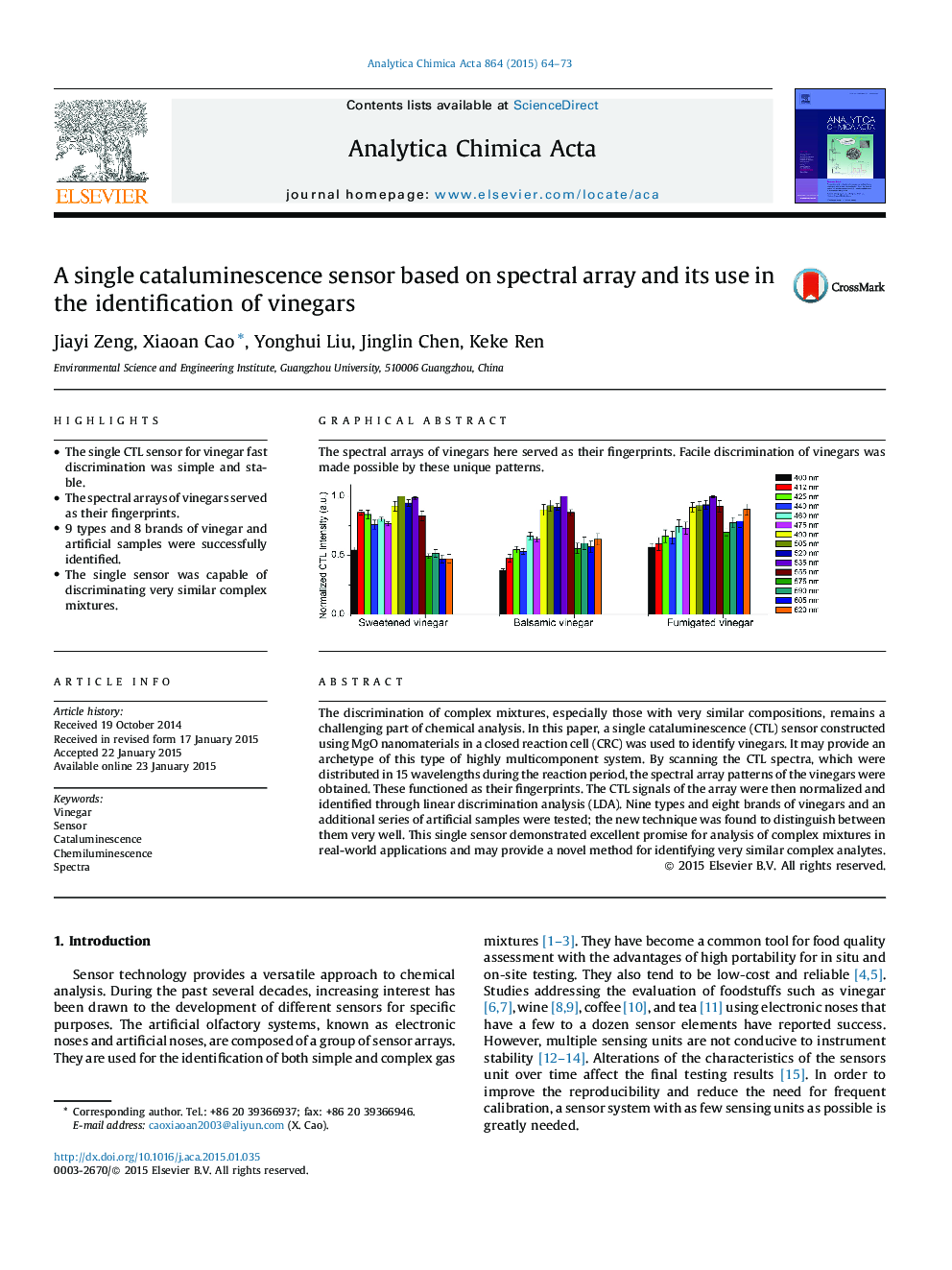| کد مقاله | کد نشریه | سال انتشار | مقاله انگلیسی | نسخه تمام متن |
|---|---|---|---|---|
| 1163592 | 1490968 | 2015 | 10 صفحه PDF | دانلود رایگان |
• The single CTL sensor for vinegar fast discrimination was simple and stable.
• The spectral arrays of vinegars served as their fingerprints.
• 9 types and 8 brands of vinegar and artificial samples were successfully identified.
• The single sensor was capable of discriminating very similar complex mixtures.
The discrimination of complex mixtures, especially those with very similar compositions, remains a challenging part of chemical analysis. In this paper, a single cataluminescence (CTL) sensor constructed using MgO nanomaterials in a closed reaction cell (CRC) was used to identify vinegars. It may provide an archetype of this type of highly multicomponent system. By scanning the CTL spectra, which were distributed in 15 wavelengths during the reaction period, the spectral array patterns of the vinegars were obtained. These functioned as their fingerprints. The CTL signals of the array were then normalized and identified through linear discrimination analysis (LDA). Nine types and eight brands of vinegars and an additional series of artificial samples were tested; the new technique was found to distinguish between them very well. This single sensor demonstrated excellent promise for analysis of complex mixtures in real-world applications and may provide a novel method for identifying very similar complex analytes.
The spectral arrays of vinegars here served as their fingerprints. Facile discrimination of vinegars was made possible by these unique patterns.Figure optionsDownload as PowerPoint slide
Journal: Analytica Chimica Acta - Volume 864, 15 March 2015, Pages 64–73
